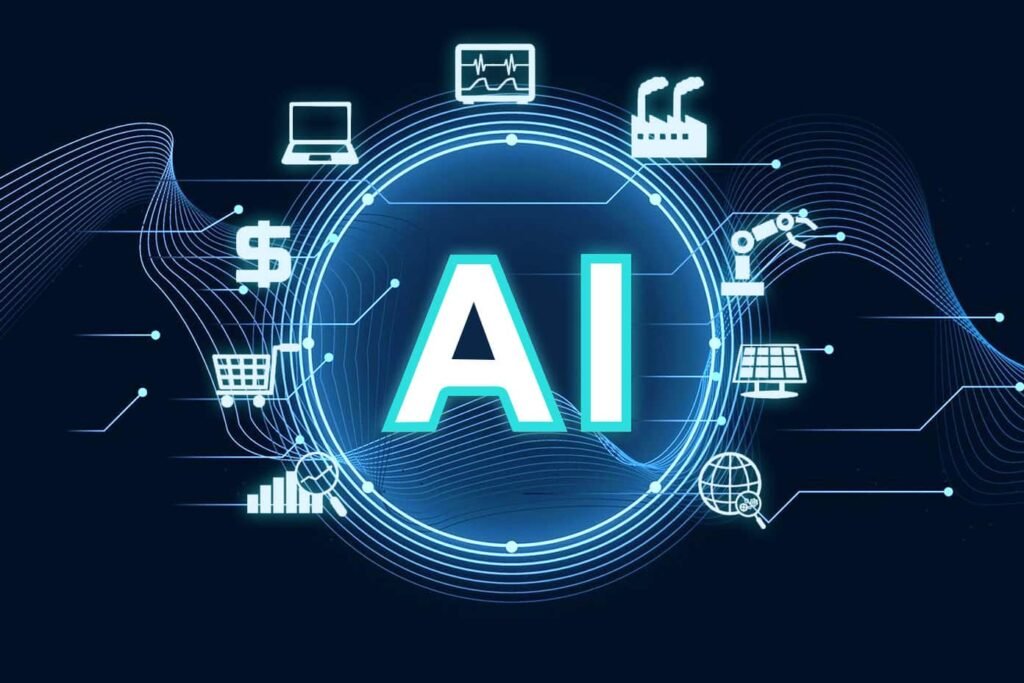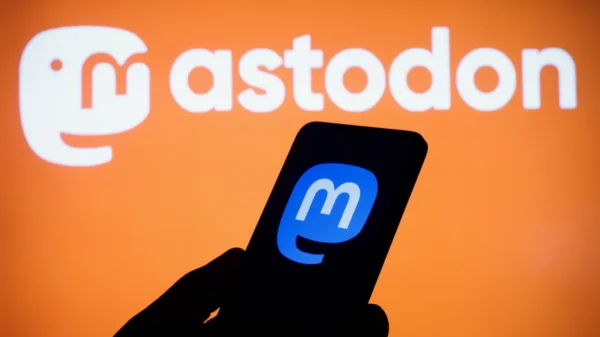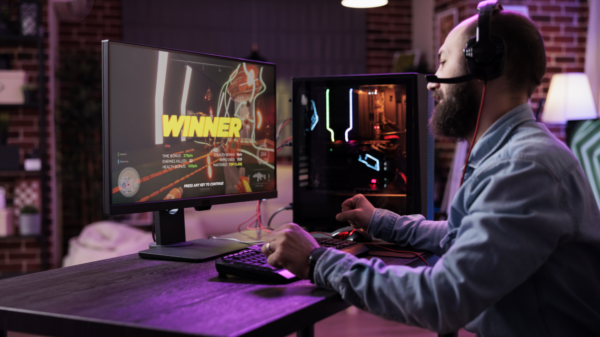AI for Everyone: The Path to Democratizing Artificial Intelligence
Imagine a world where the symphony of artificial intelligence isn’t just for the virtuosos of code, but a melody that resonates with every curious mind, a narrative of ‘Democratizing AI’ that invites you to wield the conductor’s baton of innovation and shape the future’s harmonious crescendo.
Key takeaways:
- AI is reshaping industries with its algorithms and data-driven power.
- The article questions who should access AI benefits and how to make them accessible.
- Democratizing AI” is about inviting everyone, not just tech experts, to join the AI revolution.
- Different approaches are being used to make AI accessible to all types of developers.
- Overcoming technical barriers through platforms like low-code and no-code AI development is important.
- Ethical considerations and bias mitigation ensure fairness and inclusivity in AI.
In the ever-shifting symphony of technological progress, the rise of artificial intelligence (AI) stands as a mesmerising crescendo. From humble beginnings in academia to reshaping entire industries, AI’s evolution has been nothing short of a marvel. But with such monumental power at play, a lingering question remains: Who gets to partake in this dazzling dance of innovation? This is where the enchanting concept of “democratizing AI” takes centre stage, casting a spotlight on the audacious goal of making AI accessible to every developer, regardless of their background or prowess.
Democratizing AI—it’s a phrase that sounds as intriguing as it is complex. At its core, it’s about more than just algorithms and data; it’s about breaking down barriers and dissolving the barriers of technical mystique. Imagine a world where the exhilarating realm of AI isn’t confined to a select few but rather opens its doors to every curious mind with a thirst for creation. This metamorphosis isn’t just a fanciful notion; it’s a seismic shift in the way we perceive AI’s role in our lives.
In an era where AI is increasingly woven into the fabric of our existence, the imperative to democratise its capabilities becomes ever more vital. But what does this really mean? Simply put, it’s about fostering an ecosystem where AI isn’t an enigma accessible only to a priesthood of computer scientists. It’s about beckoning the dreamers, the tinkerers, and the innovators from all walks of life to participate in shaping AI’s destiny.
The beauty of democratisation lies not merely in its idealism but in its profound implications. As AI weaves its way into diverse fields, from healthcare to agriculture, its democratisation becomes a beacon of hope. It’s an invitation to researchers, artists, doctors, and educators to wield the tools of AI to redefine what’s possible.
So, why does democratising AI matter? Under the surface, it’s a tribute to the very essence of human curiosity and creativity. It’s a testament to the belief that the next groundbreaking idea might not come from a polished AI expert but from an unassuming individual with a novel perspective. It’s about nurturing a fertile ground where serendipity meets science, where innovation thrives not in the hands of a few but as a collective symphony of minds.
In this labyrinth of possibilities, join us as we venture into the heart of democratising AI. Together, we’ll unravel the threads of technical intricacies and explore the avenues where accessibility triumphs over adversity. From open-source frameworks to low-code wonders, we’ll traverse the terrain where AI’s once-esoteric domain transforms into a playground for creators.
The Need for Democratizing AI: Overcoming Technical Barriers
In the dazzling tapestry of technological advancement, one resplendent thread weaves through the intricate design: artificial intelligence (AI). A symphony of algorithms and data, AI has conducted a breathtaking transformation across industries, raising humanity to unprecedented heights. Yet, as we marvel at the crescendo of AI’s achievements, a critical question emerges from the enigma: Who gets to compose the next stanza of this digital opus? Here enters the stirring concept of “democratizing AI,” an endeavour that beckons us to surmount the formidable fortress of technical mystique.
Diversifying Programming Languages for AI Development
In the echoing corridors of AI development, programming languages resonate like distinct notes in a harmonious melody. However, the challenge lies in making this melody accessible to a chorus of developers with varying skill sets. Imagine a world where the AI symphony is not confined to the fluent conductors of Python and R but welcomes the clarion calls of JavaScript, Go, and even the unsung melodies of new languages. This harmonisation of languages brings AI within reach, transforming an exclusive recital into an inclusive ensemble.
Simplifying Complex Algorithms with User-Friendly Libraries
Venturing deeper into the labyrinth of AI, we encounter the intricate algorithms that underpin its magic. To the uninitiated, these algorithms resemble cryptic incantations in an arcane language. However, imagine a realm where these sorceries are encapsulated within user-friendly libraries—a collection of spells, if you will. These libraries act as the guiding stars for novice astronomers, illuminating the path toward crafting AI-powered constellations without getting lost in the cosmic complexities.
Enabling Seamless Integration of AI into Existing Applications
Imagine a bridge connecting the shores of conventional software and the AI cosmos. The bridge, intricate and vital, is the integration of AI into existing applications. In a world of democratised AI, this bridge becomes accessible to developers across disciplines. It’s not just about crafting self-contained AI marvels; it’s about seamlessly embedding AI’s genius into the software tapestry we’re familiar with. This integration empowers developers to augment their creations with an extra layer of AI-powered brilliance, all while preserving the comfort of the familiar.
Democratizing AI transcends the realm of mere accessibility; it’s an alchemical blend of art and science. It’s the transformation of complex spells into melodies anyone can hum along to. It’s about realising that AI isn’t a mystic art reserved for a privileged few but a shared endeavour that empowers every aspiring virtuoso.
The Need for Democratizing AI: Addressing Resource Constraints
In the grand theatre of technological innovation, the spotlight has cast a dazzling glow upon the enigmatic realm of artificial intelligence (AI). With a breathtaking performance, AI has waltzed through our lives, leaving an indelible mark on industries far and wide. Yet, amid the captivating choreography of AI’s progress, a shadow looms—a question that demands attention: Who among us is granted a front-row seat to this electrifying performance?
Step forward onto the stage of “democratizing AI,” a revolutionary concept that challenges the very fabric of exclusivity woven into the AI narrative. The essence lies not merely in the algorithms or the data, but in the very essence of accessibility. It’s a call to arms, a resonating proclamation that every aspiring creator, irrespective of their origin or resources, should wield the brush of AI innovation.
Cloud-Based AI Services for Scalability
Picture a realm where the ethereal mist of the cloud envelopes AI, bestowing upon it the power of scale. In this domain, developers are liberated from the shackles of limited hardware resources. Cloud-based AI services unfurl a boundless canvas upon which creators, regardless of their computational prowess, can paint strokes of ingenuity. The cloud, a nebulous sanctuary, beckons creative minds to sculpt AI models of remarkable magnitude without being tethered to earthly limitations.
Optimising AI Models for Efficiency
Enter the realm of efficiency, where AI models shed their excesses and don streamlined attire. The pursuit of democratisation is not merely about inviting all to the feast; it’s also about ensuring that the banquet hall is optimised for sustenance. Developers tread the path of model optimization, a meticulous dance that balances complexity and elegance. In this dance, models are trimmed, streamlined, and tailored for resource efficiency, ensuring that even modest hardware becomes a conduit for AI marvels.
Providing Cost-Effective Solutions for Small Developers
Imagine a sanctuary where the gates of AI innovation are open to all, regardless of the size of their coin purse. This is the heart of democratisation—making AI a realm where cost is not a formidable sentinel barring the entry of small developers. Affordable AI solutions stand as beacons of inclusivity, ushering in a plethora of creators who might otherwise find themselves confined to the fringes of this technological ballroom.
Approaches to Democratizing AI: Pre-Trained Models and Transfer Learning
In the grand tapestry of human progress, few threads shimmer as brilliantly as the evolution of artificial intelligence (AI). A symphony of algorithms and data, AI has orchestrated a transformative crescendo across industries, rewriting the very lexicon of innovation. Yet, amidst this resounding melody, a question of remarkable pertinence arises: Who among us shall be privileged to compose the next stanza in this remarkable symphony of technology?
Step onto the stage of “democratizing AI,” a breathtaking concept that dismantles the fortress of exclusivity surrounding AI and invites the world to partake in its brilliance. This endeavour isn’t merely about deciphering complex code or intricate data patterns. It’s a clarion call that beckons not just the technologically adept but every curious mind yearning to unravel the enigma of AI.
Democratizing AI through Pre-Trained Models
Imagine, if you will, an AI canvas already adorned with intricate brushstrokes—a masterpiece already in progress. This is the magic of pre-trained models. These digital prodigies, meticulously trained on vast swathes of data, encapsulate the essence of democratisation. With pre-trained models at hand, developers are no longer architects labouring over every detail; they become sculptors, chiselling away to reveal the masterwork hidden within.
Transfer Learning: Adapting Models for Specific Tasks
Venture into the realm of transfer learning, a domain where pre-trained models aren’t just artifacts but tools of creative reinvention. Picture a neural network as a versatile chameleon, its colours shifting to suit different environments. Transfer learning empowers developers to seize pre-trained models and refashion them for distinct tasks, like a literary alchemist transmuting words into gold. This transformative process paves the way for specialisation, as models once generalists metamorphose into task-specific virtuosos.
Case Studies: Success Stories of Transfer Learning
Journey into the annals of AI history, and you’ll unearth tales of transfer learning’s triumphs. One such tale is the transformative journey of language translation. By repurposing models trained on vast textual data, translation engines emerge from the cocoon of generic understanding to wield the fine brushstrokes of multilingual nuance. This metamorphosis, a testament to the democratising power of transfer learning, empowers developers to stand atop the shoulders of AI giants and glimpse the vistas of innovation that lay beyond.
Approaches to Democratizing AI: Low-Code and No-Code AI Development
Amid the bustling agora of technological advancement, a titan has emerged—artificial intelligence (AI). A phenomenon that once seemed to be the exclusive dominion of tech wizards has now permeated the fabric of our existence, a digital elixir transforming industries and reshaping our world. Yet, amidst this symphony of innovation, a profound question lingers: Who among us shall dance to the tunes of AI’s transformative waltz?
Enter the stage of “Democratizing AI,” a spellbinding narrative that redefines the very contours of accessibility. It’s a concept that transcends the lines of complex code and convolution algorithms. It beckons not just the virtuosos of programming but every curious mind, irrespective of their technical pedigree, to partake in the AI extravaganza.
Empowering Non-Technical Developers with Low-Code Platforms
Imagine a realm where lines of code resemble the strokes of a paintbrush—a canvas where novices and maestros alike can give life to their imaginative strokes. This is the magic of low-code platforms. These digital easels bring forth an environment where developers, both green and seasoned, can orchestrate AI symphonies without being ensnared in the intricacies of syntax. It’s a democratisation of creation, where the tools are accessible and the boundaries of technical expertise dissolve into the past.
No-Code AI: Making AI Development Accessible to Everyone
Imagine a realm where the act of crafting AI is stripped down to its core essence—an act bereft of deciphering lines or wrangling algorithms. This is the realm of no-code AI, where the barriers of technicality are shattered and creativity knows no bounds. Here, the non-programmers, the dreamers, and the uninitiated take centre stage, wielding AI’s magic as effortlessly as brush strokes across a canvas. It’s the embodiment of democratisation in its purest form—a domain where the complexities of code are relegated to mere whispers in the wind.
Benefits and Limitations of Low-Code and No-Code AI
As we delve into this brave new world, it’s crucial to acknowledge both the symphony and the cacophony. The allure of low-code and no-code AI lies in its ability to unlock the gates of innovation. It invites creators from diverse backgrounds—artists, educators, and healthcare professionals—to collaborate with AI’s genius without the need for a doctorate in programming. Yet, with elegance comes the echo of caution. The simplification might nudge aside the nuance, and the depth of customization could sometimes be restrained. Striking this delicate balance between accessibility and intricacy becomes the battleground where low-code and no-code engage in their dance.

Approaches to Democratizing AI: Open-Source AI Frameworks and Tools
In the bustling bazaar of technological marvels, one phenomenon stands as a colossal colossus—artificial intelligence (AI). A mesmerising tapestry woven from algorithms and data, AI has pirouetted through our lives, altering industries and nudging the boundaries of human capability. But as the grandeur of AI’s performance unfurls, an imperative question takes centre stage: Who among us shall ascend the throne of AI’s dominion?
Cue the symphony of “Democratizing AI,” a symphony that echoes far beyond the realms of mere accessibility. It’s an overture inviting not only the virtuosi of code but every intrepid mind with a thirst for creation. This tale is one of shared empowerment, of unravelling the intricate knot that once held AI captive within the cryptic scrolls of computer science.
Role of Open-Source Projects in Democratizing AI
Imagine, for a moment, an open library brimming with knowledge—a repository of treasures unlocked for all. This is the essence of open-source AI frameworks. These digital troves democratise AI by flinging wide the gates of understanding. No longer are the secrets of AI reserved for an elite guild; they are etched in the communal annals for every developer, no matter their background, to glean inspiration and shape innovation.
Popular Open-Source AI Frameworks: TensorFlow, PyTorch, and More
Waltzing further into this panorama, two titans emerge from the curtain—TensorFlow and PyTorch. These open-source monoliths stand as beacons of democratisation, offering tools for creation that transcend the boundaries of conventional coding. TensorFlow, a sorcerer’s spellbook of machine learning, empowers developers with the incantations to craft neural networks and predictive models. On the opposite side of this binary tapestry is PyTorch, a canvas where AI aficionados wield tensors as brushes, painting vibrant portraits of intelligence. Together, these frameworks paint a tableau of accessibility, where the barriers of esoteric complexity crumble and a symphony of AI emerges.
Collaborative Development and Knowledge Sharing
In this expansive universe of open-source AI, collaboration becomes the heart that pulses life into innovation. Developers from every corner of the globe unite, sharing insights and refining code. The digital agora of GitHub becomes a bustling marketplace of ideas, where the cogs of collaboration turn the wheels of democratisation. The result? A tapestry of AI that reflects the kaleidoscope of human perspectives, a mosaic of creativity ignited by shared knowledge.
Accelerating Innovation Across Industries
In the grand theatre of technological evolution, one virtuoso has emerged to command the spotlight—artificial intelligence (AI). A majestic symphony of algorithms and data, AI has orchestrated a transformative crescendo, rewriting the very narratives of industries and redefining the contours of human achievement. Yet, amid this mesmerising performance, a question looms like a spectre: Who among us shall have a front-row seat to this digital revolution?
Enter the resplendent stage of “Democratizing AI,” an enthralling narrative that transcends the boundaries of code and complexity. It beckons not just the learned scholars of binary poetry but every visionary spirit yearning to embrace the future’s aura. This narrative unfolds as an embrace—a promise that the power of AI will no longer be the privilege of the elite few but a universal torch that kindles the flames of innovation across industries.
Transforming Healthcare with Accessible AI Solutions
Imagine the realm of healthcare being transformed into a haven of predictive prowess. AI algorithms, once confined to the enclaves of academia, now venture boldly into the realm of diagnostics. Imagine AI-guided medical imaging deciphering the intricacies of X-rays and MRI scans. This democratisation transcends the bounds of medical expertise, empowering practitioners and radiologists with AI’s second sight. In this sphere, democratising AI isn’t just a narrative; it’s a lifeline that unfurls beneath the hands of caregivers, promising enhanced accuracy and a profound impact on patient outcomes.
Enhancing Education and e-Learning Platforms
Beyond the realms of stethoscopes and scalpels, democratised AI takes root in the fertile soil of education. Imagine classrooms where AI serves as the ever-watchful tutor, adapting its pedagogical approach to the unique learning styles of each student. This transformation isn’t limited to traditional settings; it spills into the virtual corridors of e-learning platforms. Imagine the democratisation of knowledge as AI algorithms weave personalised learning pathways, opening doors to education for diverse minds, irrespective of their geographic or socio-economic background.
AI in Agriculture: Boosting Efficiency and Sustainability
Venture into the pastoral landscapes of agriculture, where fields become a canvas for AI’s brushstrokes. Democratized AI unveils a bounty of innovations: drones that monitor crop health with unprecedented precision, predictive models that forecast weather patterns, and algorithms that optimise irrigation for maximum yield and minimal waste. This democratisation of AI sows seeds of efficiency and sustainability, cultivating a harvest that feeds not just the present but generations yet to come.
Ethical Considerations and Bias Mitigation
In the labyrinthine expanse of technological progress, one enigma reigns supreme—artificial intelligence (AI). A symphony of algorithms and data, AI has orchestrated a transformative opus, reshaping industries and casting an intricate spell on human existence. Yet, as this digital ballet captivates our senses, a solemn question resonates: Who among us shall stand as the guardians of AI’s moral compass?
Step into the spotlight of “Democratizing AI,” a compelling narrative that pierces through the complexity and illuminates the ethical dimensions. It beckons not just the algorithmic sorcerers but every sentient mind with a stake in AI’s destiny. This narrative isn’t just a call to democratise access; it’s a clarion call to democratise responsibility—a recognition that as AI’s reach expands, so must our vigilance over the ethical precipice it teeters upon.
Ensuring Fairness and Transparency in Democratized AI
Imagine an AI-powered marketplace where algorithms influence the choices we make, from shopping to news consumption. Now, imagine a realm where these algorithms harbour biases—prejudices unknowingly absorbed from the world they learn from. Democratized AI becomes a double-edged sword; while it empowers, it also demands vigilance. To ensure fairness, transparency becomes a sentinel, a guardian that peers through the opaque veil of algorithms. The narrative of democratisation mandates that ethical considerations are etched into the very core of AI development.
Addressing Bias in Training Data and Algorithms
Venture further into the heart of democratised AI, where training data serves as the ink that paints the canvas of algorithms. Here, the spectre of bias materialises—a whisper from the past that taints the present. Addressing this bias becomes paramount—a quest to sift through data with the meticulousness of an archivist and the impartiality of a judge. The democratisation of AI impels developers to scrutinise not only lines of code but the shadows they cast, ensuring that the AI symphony resonates without discordant notes of prejudice.
Monitoring and Accountability in AI Development
Imagine an AI-infused world where digital entities wield influence over our choices, from financial decisions to medical diagnoses. As democratised AI steps onto this stage, a new question arises: Who holds the reins of accountability? This realm isn’t merely one of technological marvels; it’s a landscape where ethics dance in tandem with innovation. Developers become stewards of responsibility, bound by an unspoken covenant to monitor, refine, and uphold the ethical sanctity of AI’s creations.
Shifting Developer Roles and Skill Sets
In the intricate mosaic of technological evolution, a central figure emerges, bedazzling the canvas—artificial intelligence (AI). A symphony of algorithms and data, AI has masterfully composed a transformative melody, redefining industries and serenading our world with unprecedented possibilities. Yet, as the cadence of AI’s performance reverberates, a profound question takes centre stage: How shall the roles of those who shape AI’s destiny evolve in this unfolding narrative?
Enter the captivating chapter of “Democratizing AI,” a narrative that unspools the threads of developer roles and skill sets with striking clarity. This isn’t merely a tale of code and computation, but a tale of metamorphosis—a saga where the symphony of democratisation intertwines with the evolution of those who once conducted AI’s opus.
Evolving Skill Requirements for Developers
Imagine a landscape where developers, once bound by the esoteric frontiers of code, tread upon a wider terrain. In the domain of democratised AI, the skills needed to sculpt the digital marvels of the future transcend conventional boundaries. Developers evolve into interdisciplinary artisans, melding technical finesse with an understanding of ethics, human psychology, and communication. This is the dawn of a Renaissance in development—a shift where holistic proficiency is the clarion call.
Opportunities for Creativity and Innovation
Venture deeper into this evolving narrative, and you’ll find a crucible of creativity—a realm where the alchemy of ideas is as potent as lines of code. As democratisation unfolds, it unfetters the minds of developers, granting them the audacity to fuse AI with their unique ingenuity. The developer’s role becomes not that of a mere conductor but of a composer—a creator who orchestrates AI’s potential to harmonise with humanity’s aspirations. It’s an opportunity for innovation that knows no bounds, where the playbook is rewritten and the rules are reshaped.
Navigating the Changing Landscape of AI-Related Jobs
Imagine a world where the traditional delineations of job roles blur and transform. As democratised AI takes centre stage, new job horizons emerge, beckoning pioneers to explore uncharted territories. Roles that once seemed disparate—designers, ethicists, engineers—entwine like dancers in a ballroom. The narrative of democratisation casts a spotlight on adaptability, challenging developers to traverse unmarked paths, to embrace fluidity, and to embrace the evolving demands of an AI-infused landscape.
Edge Computing and On-Device AI
In the intricate tapestry of technological advancement, a distinct motif takes centre stage—artificial intelligence (AI). A symphony of algorithms and data, AI has orchestrated a resounding crescendo, heralding transformative possibilities across industries. Amid this spectacular performance, a question of remarkable pertinence emerges: How can we bring the marvels of AI closer to home, where the intricate dance of computation occurs on the very thresholds of our devices?
Welcome to the enthralling realm of “democratizing AI,” a narrative that unfurls the potent chapters of edge computing and on-device AI. It’s not just a tale of accessibility; it’s an odyssey that redefines the very stages upon which AI’s performance unfolds. This narrative beckons not just the elite programmers but every curious explorer yearning to grasp the reins of AI’s potential within their grasp.
Edge Computing: Empowering AI at the Fringes
Imagine a landscape where the chasm between AI’s prowess and real-world application shrinks into obscurity. Edge computing stands as the bridge, a marvel that empowers devices to carry the mantle of computation themselves. Here, on the edges of our digital existence, devices transform into intelligent agents, interpreting data and making decisions without recourse to distant servers. This democratisation of AI isn’t just a paradigm shift; it’s a seismic dance of empowerment, where the fusion of hardware and intelligence empowers creators to harness AI’s magic on a personal scale.
On-Device AI: Catalyzing Real-Time Intelligence
Venture further into this narrative, and you’ll find the mesmerising sphere of on-device AI. Picture devices that aren’t mere tools but cognitive companions—devices that grasp context and anticipate needs in real-time. This is the embodiment of democratisation, where AI’s gaze extends beyond the cloud to the very devices we hold dear. The symphony of democratising AI is no longer confined to the ethereal realms of algorithms; it resonates within our pockets, on our wrists, and at our fingertips.
The Evolution of Developer Engagement
As we tread the path of democratised edge computing and on-device AI, a profound shift emerges in the tapestry of developer engagement. The roles of programmers, once rooted in server-side orchestration, ripple outward to encompass the intricacies of optimising for constrained resources. This evolution is an ode to versatility—a testament that democratising AI isn’t just about making the code accessible; it’s about extending the realm of innovation to hardware and devices, ushering forth an era where creators engage on a broader canvas.
Human-Centric AI Design
In the intricate labyrinth of technological progress, one pivotal facet shines forth—the dawn of artificial intelligence (AI). A symphony woven from algorithms and data, AI has unfurled a transformative opus, scripting new narratives across industries and redefining the very contours of human engagement. Yet, as this symphonic marvel enraptured our senses, a question emerged with undeniable urgency: How can we weave the threads of AI’s evolution to harmonise more seamlessly with human existence?
Enter the enthralling chapter of “Democratizing AI,” a narrative that unveils the nuanced dimensions of human-centric AI design. It’s not just a tale of code and computation; it’s an exploration of the profound interplay between technology and human sensibilities. This narrative beckons not only the architects of algorithms but every visionary soul who yearns for a world where AI aligns harmoniously with the human experience.
Embracing User-centered Interfaces
Imagine an AI interface that converses with the grace of an old friend—a digital companion that comprehends not only our words but our intentions, desires, and emotions. This is the essence of human-centric AI design. It shifts the focus from cold lines of code to warm conversations, where developers orchestrate interfaces that resonate with human intuition. Democratizing AI becomes an endeavour not just of accessibility but of empathy—a promise that AI interfaces will mould themselves around the contours of human thought.
Tailoring AI to Individual Needs
Venture deeper into this narrative, and you’ll uncover a realm where AI is not a one-size-fits-all ensemble but a bespoke garment meticulously stitched to individual needs. Human-centric design mandates that AI algorithms adapt, flex, and accommodate. Imagine healthcare AI that tailors treatment plans to a patient’s unique biology or educational AI that modulates its pedagogical approach based on a student’s learning style. This is democratisation in its most intimate form—a promise that AI, like a skilled artisan, will craft experiences that resonate with the distinct rhythms of every human life.
Ethical Considerations in Human-Centric AI
As we traverse the landscape of human-centric AI design, we encounter a thorny thicket—a labyrinth where ethics and innovation engage in a delicate dance. The narratives of democratisation and human-centric design intertwine, challenging developers not only to master code but to grapple with moral quandaries. The symphony of AI harmonisation becomes an echo of ethical introspection, a call for creators to navigate the fine line between personalization and privacy, between enhancement and manipulation.
Global Collaboration and Inclusivity
In the complex interplay of technological evolution, a remarkable protagonist emerges—the realm of artificial intelligence (AI). A symphony orchestrated by algorithms and data, AI’s melody has reverberated through industries, casting a transformative spell on the very essence of human progress. Yet, as the virtuosity of AI’s performance enchants the world, a question emerges—an inquiry that resonates with universal urgency: How can we shape the symphony of AI to resonate with the rich tapestry of global diversity?
Enter the captivating chronicle of “Democratizing AI,” a narrative that transcends the domains of mere code and computation. This isn’t just a tale of technological accessibility; it’s a narrative that beckons humanity to stand as united conductors, poised to direct the harmonious fusion of AI and global inclusivity.
A Symphony of Global Collaboration
Imagine a world where the minds of developers from different corners of the globe converge—an intellectual mélange where perspectives interweave and boundaries dissolve. This is the essence of global collaboration in the realm of democratised AI. It’s an orchestration where expertise resonates across continents and cultural nuances fuse with technological innovation. As AI democratises, it invites a symphony of voices—each note an echo of a distinct culture, a unique experience, contributing to the grand tapestry of creation.
Inclusivity Beyond Language and Cultural Barriers
Venture further into this narrative, and you’ll find the narrative of inclusivity—the resonance that AI’s democratisation isn’t limited by language or cultural confines. Imagine AI interfaces that effortlessly translate and adapt, embracing users irrespective of their native tongue. Here, the symphony of inclusivity plays a harmonious tune, where accessibility becomes an anthem of unity. AI becomes a bridge, not just between data points but also between hearts and minds across the globe.
The Pinnacle of Ethical and Collaborative Engagement
As we navigate the evolving symphony of global collaboration and inclusivity, we find ourselves standing on the precipice of ethical introspection. The narratives of democratisation and inclusivity intertwine in a dance of moral responsibility—a call for creators not only to craft code but to deliberate the implications of their creations. The symphony of AI harmonisation reverberates with an ethical cadence, underscoring the need for collaborative engagement that transcends borders and spurs collective consciousness.
















































